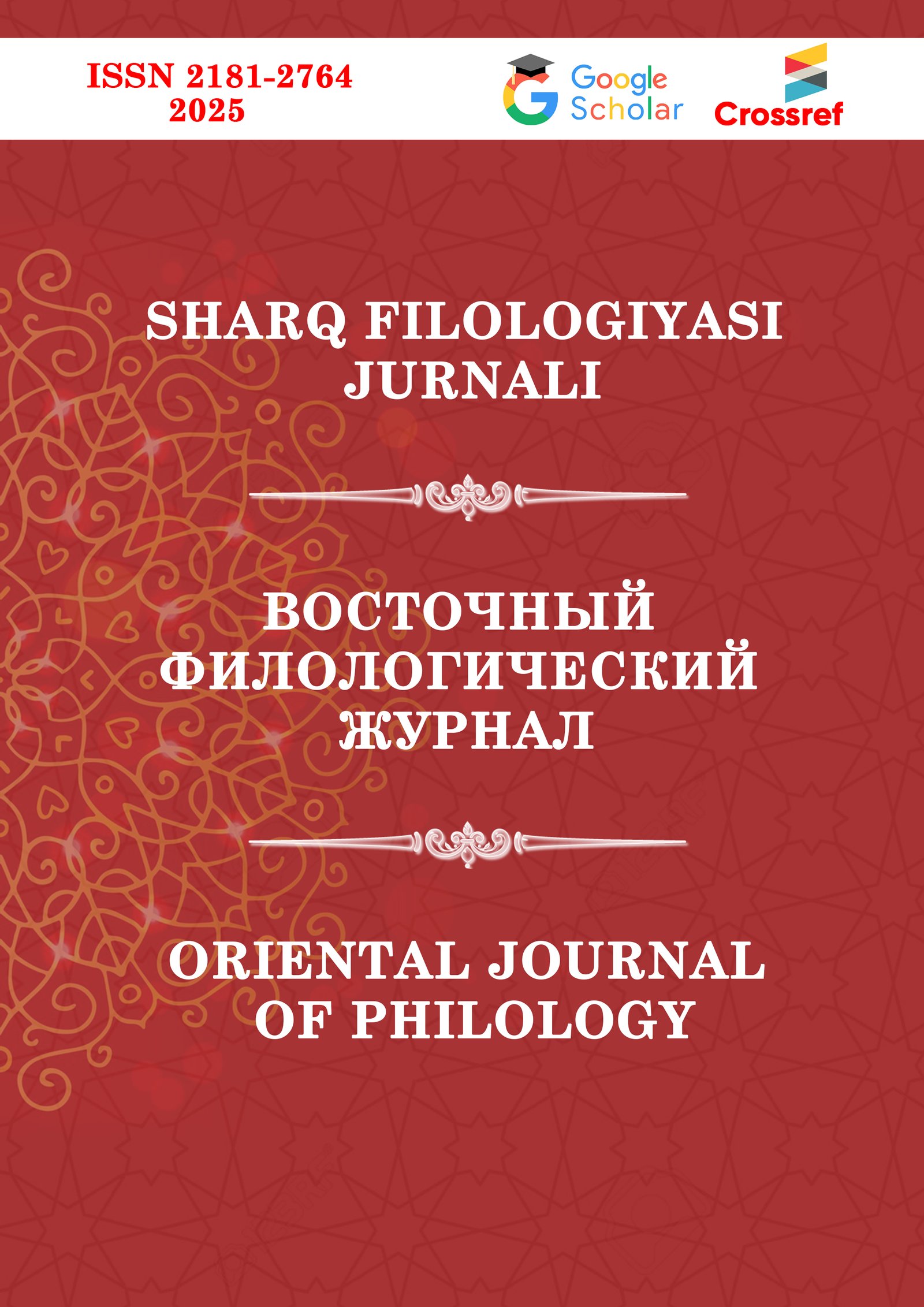 Articles
| Open Access |
DOI:
https://doi.org/10.37547/supsci-ojp-05-03-99
Articles
| Open Access |
DOI:
https://doi.org/10.37547/supsci-ojp-05-03-99
THE EASTERN RENAISSANCE AND ABU NASR AL-FARABI: HIS LIFE AND INFLUENCE ON ARABIC LINGUISTICS
Khaydarkhon H. Yuldashkhojayev , Abdulkuddus A. Abdusattorov ,Abstract
During the 9th to 11th centuries, Arabic linguistics in Movarounnahr reached its peak, with scholars such as Abu Nasr al-Farabi, Ibn Sina, al-Maturidi, and az-Zarnuji deeply studying the lexical, phonetic, morphological, and syntactic aspects of the Arabic language. In cities like Bukhara, Samarkand, Tashkent, and Merv, unique schools of Arabic linguistics emerged. The scholars of Movarounnahr introduced new theoretical approaches and methodologies, investigating the influence of language on culture, philosophy, and human consciousness. Al-Farabi’s works, such as “Kitab al-Huruf”, provided a profound philosophical analysis of the relationship between language and philosophy. The development of Arabic linguistics during this period held fundamental significance not only for its time but also for subsequent centuries. The scholarly legacy of Movarounnahr’s intellectuals continues to contribute significantly to the advancement of modern linguistics. This era remains a golden age of Arabic linguistics, leaving an indelible mark on the history of Islamic culture. The research of Movarounnahr’s scholars elevated linguistics to a new stage, providing a major impetus for its development.
Keywords
Восточное Возрождение, арабское языкознание, ученые Мавераннахра, школы Фараби, философия и язык.
References
Ahmedov, I. (2019). Arabic Linguistics in Movarounnahr in the 9th–11th Centuries. IX–XI asrlarda Movarounnahrda arab tilshunosligi.. – Tashkent: University Publishing. (in Uzbek) Retrieved from https://universitypress.uz/arabic-linguistics
Davronova, M. (2020). Arabic Linguistic Schools and Their Influence in Movarounnahr. Arab tilshunoslik maktablari va ularning Movarounnahrdagi ta’siri.– Tashkent: Sharq Publishing. 60 p. (in Uzbek)
Ibn Khaldun. (1997). Al-Muqaddimah (The Introduction).al-Muqaddima. – Beirut: Dar al-Fikr. 400 p. (in Arabic)
Nazarov, B. (2021). Abu Nasr al-Farabi and His Scientific Legacy. Abu Nasr Forobiy va uning ilmiy merosi. – Samarkand: Akademiya Publishing. (in Uzbek)
Rashidov, K. (2018). Abu Ali ibn Sina and the Development of the Arabic Language. . Abu Ali ibn Sino va arab tilining rivojlanishi. – Bukhara: Fan Publishing. (in Uzbek)
Al-Bayhaqi, Zahir al-Din. (1946). History of Islamic Sages. Ta’rix hukama al-Islam.Edited by Muhammad Kurd Ali. – Damascus: Taraqqi Press. 220 p. (in Arabic)
Rustamov, A. (2020). Movarounnahr and Arab Culture: The Development of Language and Science. Movarounnahr va arab madaniyati: til va fan taraqqiyoti. – Tashkent: Sharq Publishing. 136 p. (in Uzbek)
Walzer, R. (1985). Al-Farabi on the Perfect State: Abu Nasr al-Farabi’s Mabadi Ara Ahl al-Madina al-Fadila. Al-Farabi o sovershennom gosudarstve: Mabadi ara akhl al-Madina al-Fadila Abu Nasra al-Farabi. – Oxford: Clarendon Press. 120 p. (in English) Retrieved from https://clarendonpress.com/farabi-perfect-state
Article Statistics
Downloads
Copyright License
Copyright (c) 2025 Khaydarkhon H. Yuldashkhojayev, Abdulkuddus A. Abdusattorov

This work is licensed under a Creative Commons Attribution 4.0 International License.

